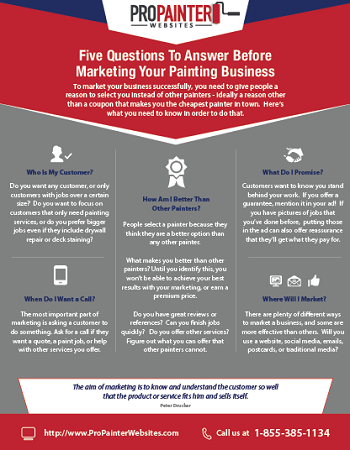Discover Just How Seasonal Influences Can Influence The Effectiveness Of Industrial Outside Painting And Figure Out One Of The Most Beneficial Times To Make Sure Resilient Results For Your Job
Discover Just How Seasonal Influences Can Influence The Effectiveness Of Industrial Outside Painting And Figure Out One Of The Most Beneficial Times To Make Sure Resilient Results For Your Job
Blog Article
Published By-Carlson Rodriquez
When you're intending a business exterior paint task, seasonal aspects can make or damage your results. You'll wish to take into consideration exactly how temperature and moisture influence paint application and drying out times. Picking the ideal period can guarantee your paint adheres correctly and lasts longer. Yet which seasons are really the very best for this sort of work? Allow's check out the key elements that can affect your job's success.
The Influence of Temperature Level on Paint Application
When you're preparing a commercial outside painting task, the temperature can substantially influence just how well the paint adheres and dries.
Preferably, you wish to repaint when temperatures vary in between 50 ° F and 85 ° F. If it's too cool, the paint may not cure effectively, resulting in issues like peeling off or breaking.
On the flip side, if it's too warm, the paint can dry out also swiftly, preventing appropriate bond and resulting in an irregular surface.
You must additionally consider the time of day; early morning or late afternoon offers cooler temperature levels, which can be more favorable.
Constantly examine the maker's recommendations for the particular paint you're using, as they usually give assistance on the excellent temperature array for optimum results.
Moisture and Its Impact on Drying Times
Temperature isn't the only environmental element that affects your industrial external paint project; moisture plays a considerable duty too. High humidity levels can reduce drying times dramatically, influencing the general top quality of your paint work.
When the air is filled with dampness, the paint takes longer to cure, which can lead to concerns like bad adhesion and a higher risk of mildew growth. If you're painting on an especially damp day, be prepared for extended delay times between layers.
It's important to keep an eye on regional weather and plan accordingly. Preferably, aim for humidity degrees in between 40% and 70% for optimal drying out.
Maintaining these factors in mind ensures your task stays on track and delivers an enduring surface.
Best Seasons for Commercial Outside Paint Projects
What's the best time of year for your business outside painting tasks?
Springtime and early loss are typically your best bets. Throughout these periods, temperature levels are light, and moisture levels are typically lower, developing suitable conditions for paint application and drying.
Stay clear of summer season's intense heat, which can trigger paint to dry as well quickly, leading to inadequate adhesion and surface. In a similar way, winter months's cool temperature levels can prevent correct drying out and healing, running the risk of the long life of your paint job.
Aim for days with temperature levels between 50 ° F and 85 ° F for optimal results. Keep in https://www.hertsad.co.uk/lifestyle/property/5-tips-to-prep-surfaces-in-your-home-before-painting-5026340/ to inspect the neighborhood weather prediction for rain, as wet conditions can wreck your project.
Planning around these variables guarantees your paint task runs smoothly and lasts much longer.
Conclusion
Finally, planning your business external paint projects around seasonal factors to consider can make a substantial difference in the end result. By scheduling work during the perfect temperature levels and moisture levels, you'll make sure much better attachment and drying times. Remember to keep an eye on neighborhood weather forecasts and choose the right time of year-- spring and early fall are your best choices. Taking these steps will assist you accomplish a durable and professional coating that lasts.
